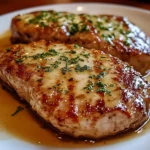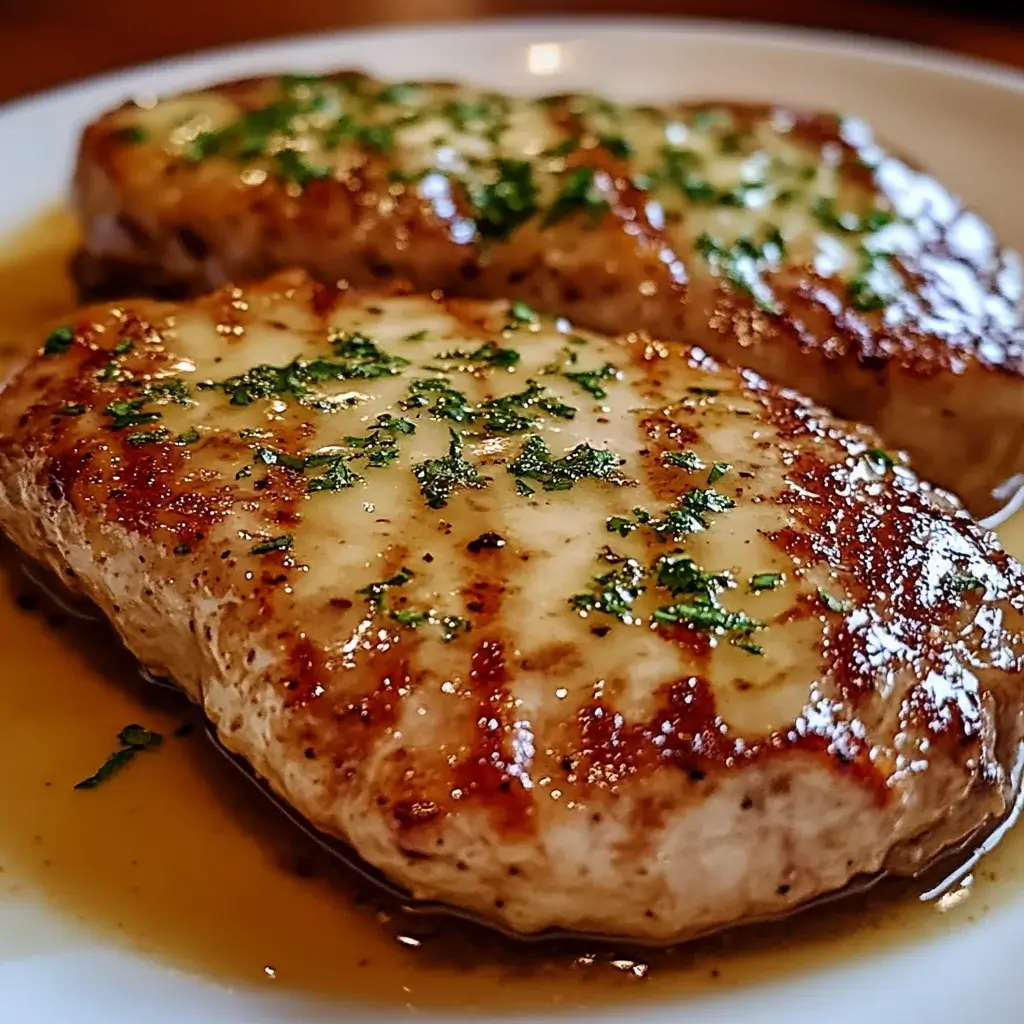Bringing the iconic steakhouse experience right into your kitchen has never been easier, or more delicious! For years, my family and I have been huge fans of LongHorn Steakhouse. There’s just something about the perfectly seasoned steaks, cooked to juicy perfection, that keeps us coming back. However, those restaurant bills can add up! So, I embarked on a mission: to recreate that beloved LongHorn flavor at home. After countless attempts, tweaking seasonings, grilling techniques, and even butter recipes, I finally cracked the code. This recipe isn’t just close; it’s a dead ringer for that classic LongHorn steakhouse taste. The first time I served this to my family, the silence was deafening – only broken by the happy sounds of satisfied chewing. My husband declared it “better than the restaurant,” and my kids, usually picky eaters, asked for seconds (and thirds!). Honestly, watching their faces light up as they devoured these steaks was more rewarding than any restaurant meal. Now, I’m thrilled to share this recipe with you, so you can experience the joy of a restaurant-quality steak, cooked in your own kitchen, without breaking the bank. Get ready to transform your next dinner into a steakhouse experience – you won’t believe how easy and incredibly tasty this is!
Ingredients: The Building Blocks of Steakhouse Perfection
To achieve that authentic LongHorn Steakhouse flavor, it’s all about quality ingredients and a carefully crafted seasoning blend. Here’s what you’ll need:
- Steaks (Ribeye, New York Strip, or Sirloin): Choose your favorite cut of steak, about 1-1.5 inches thick. Ribeye is known for its marbling and rich flavor, New York Strip offers a leaner but still flavorful option, and Sirloin is a budget-friendly choice that’s still delicious. Aim for good quality cuts with visible marbling for the best results.
- Olive Oil: Extra virgin olive oil acts as a binder for the seasoning and helps to create a beautiful sear on the steak. It also adds a subtle fruity note that complements the beef.
- Kosher Salt: The workhorse of seasoning, kosher salt enhances the natural flavors of the steak and draws out moisture, resulting in a more tender and flavorful final product. It’s crucial for proper seasoning.
- Black Pepper (Freshly Cracked): Freshly cracked black pepper offers a bolder, more aromatic flavor than pre-ground pepper. It adds a pleasant bite and complexity to the seasoning blend.
- Garlic Powder: Garlic powder provides a consistent and mellow garlic flavor that’s essential to the signature LongHorn taste. It’s less pungent than fresh garlic and blends seamlessly into the seasoning.
- Onion Powder: Similar to garlic powder, onion powder adds a foundational savory note that builds depth of flavor in the seasoning. It complements the garlic and enhances the overall umami.
- Paprika (Smoked Paprika Recommended): Paprika, especially smoked paprika, contributes a subtle smoky sweetness and beautiful color to the steak. Smoked paprika adds an extra layer of depth that mimics the flavors of grilling.
- Dried Thyme: Dried thyme adds an earthy, slightly minty, and subtly lemony note that brightens up the savory flavors of the steak. It’s a classic herb that pairs perfectly with beef.
- Dried Rosemary: Rosemary offers a piney, fragrant, and slightly peppery flavor that complements the richness of the steak. It’s a robust herb that stands up well to grilling and adds a distinct steakhouse aroma.
- Butter (Unsalted): Unsalted butter is the base for our flavorful garlic butter topping. Using unsalted butter allows you to control the overall saltiness of the dish.
- Garlic (Fresh, Minced): Freshly minced garlic adds a pungent, aromatic, and robust garlic flavor to the butter topping. It’s the star of the garlic butter and provides a noticeable kick.
- Fresh Parsley (Chopped, for Garnish): Fresh parsley adds a pop of color and a fresh, herbaceous note that brightens up the finished dish. It’s primarily for garnish but also adds a subtle flavor.
These simple yet carefully chosen ingredients, when combined correctly, will unlock the secret to that irresistible LongHorn Steakhouse flavor right in your own kitchen. The quality of your steak and the freshness of your seasonings truly make a difference, so don’t skimp on these key components!
Instructions: Mastering the Art of Steakhouse Grilling
Achieving steakhouse perfection at home is all about technique. Follow these step-by-step instructions to create a LongHorn-worthy steak that’s guaranteed to impress:
- Prepare the Steaks: Begin by removing your steaks from the refrigerator at least 30 minutes, and ideally up to an hour, before cooking. This allows them to come closer to room temperature, which promotes more even cooking throughout. Pat the steaks dry with paper towels. This is a crucial step as removing excess moisture helps achieve a better sear.
- Create the Seasoning Blend: In a small bowl, combine the kosher salt, freshly cracked black pepper, garlic powder, onion powder, paprika (smoked paprika if using), dried thyme, and dried rosemary. Mix well to ensure all the spices are evenly distributed. This is your homemade LongHorn-style seasoning blend. Feel free to adjust the ratios slightly to your personal preference after your first attempt, but this blend is a great starting point.
- Season the Steaks Generously: Drizzle both sides of each steak with olive oil, ensuring they are lightly coated. This helps the seasoning adhere to the steak. Then, generously season both sides of each steak with the prepared seasoning blend. Don’t be shy – you want to create a flavorful crust. Press the seasoning into the steak to help it stick.
- Preheat Your Grill (or Cast Iron Skillet): Preheat your grill to high heat. If using a charcoal grill, wait until the coals are glowing red and covered with a thin layer of ash. For a gas grill, preheat on high for at least 10-15 minutes. If you’re using a cast iron skillet indoors, heat it over high heat until it’s screaming hot and lightly smoking. A hot surface is essential for achieving a good sear.
- Sear the Steaks: Once the grill or skillet is hot, carefully place the seasoned steaks onto the cooking surface. Sear the steaks for 2-3 minutes per side to develop a beautiful, flavorful crust. You’ll know it’s time to flip when the steak releases easily from the grill grates or skillet. Avoid moving the steaks around too much during searing, as this can hinder the crust formation.
- Reduce Heat and Continue Cooking: After searing, reduce the heat to medium-high on the grill (or medium on the stovetop if using a skillet). Continue cooking the steaks to your desired level of doneness. For medium-rare (the recommended doneness for optimal flavor and tenderness), cook for approximately 3-5 minutes per side after searing, depending on the thickness of your steaks. For medium, cook for 5-7 minutes per side, and for medium-well, cook for 7-9 minutes per side. For well-done, which is generally not recommended for quality steaks, cook for longer, ensuring you don’t dry them out.
- Use a Meat Thermometer: The most accurate way to determine doneness is to use a meat thermometer. Insert the thermometer into the thickest part of the steak, avoiding the bone if there is one. Here are the target internal temperatures for different levels of doneness:
- Rare: 125-130°F (52-54°C)
- Medium-Rare: 130-135°F (54-57°C)
- Medium: 135-140°F (57-60°C)
- Medium-Well: 140-145°F (60-63°C)
- Well-Done: 145°F+ (63°C+)
- Prepare the Garlic Butter: While the steaks are cooking, prepare the garlic butter. In a small saucepan or microwave-safe bowl, melt the unsalted butter. Add the minced fresh garlic and cook gently over low heat (or microwave in short intervals) for about 1-2 minutes, until the garlic is fragrant but not browned. Be careful not to burn the garlic. Set aside and keep warm.
- Rest the Steaks: Once the steaks reach your desired internal temperature, remove them from the grill or skillet and place them on a cutting board. Tent them loosely with foil and let them rest for at least 5-10 minutes. This resting period is absolutely crucial. It allows the juices to redistribute throughout the steak, resulting in a more tender and flavorful final product. Cutting into a steak immediately after cooking will result in the juices running out and a drier steak.
- Slice and Serve: After resting, slice the steaks against the grain. This means cutting perpendicular to the direction of the muscle fibers. Slicing against the grain makes the steak more tender and easier to chew. Drizzle generously with the warm garlic butter. Garnish with fresh chopped parsley and serve immediately.
By following these instructions carefully, paying attention to searing, cooking times, and the crucial resting period, you’ll be able to recreate the mouthwatering steakhouse experience of LongHorn right in your own home. Don’t be afraid to practice and adjust cooking times based on your grill and your preferred level of doneness. The reward is a perfectly cooked, flavorful, and tender steak that will rival any restaurant.
Nutrition Facts: A Steakhouse Indulgence (per Serving)
Please note that nutritional values are estimates and can vary based on the specific cut of steak, trimming, and portion size. These values are based on a 6-ounce serving of ribeye steak, cooked as described in the recipe, with a moderate amount of garlic butter.
- Serving Size: 1 steak (approx. 6 ounces cooked)
- Calories: Approximately 550-650 kcal
- Protein: 45-55g
Keep in mind that these are estimations. For more precise nutritional information, you can use online nutrition calculators and input the specific ingredients and portion sizes you use. Enjoy this steak as a delicious and protein-rich meal, mindful of the calorie and fat content as part of a balanced diet.
Preparation Time: From Prep to Plate
The beauty of this LongHorn Steakhouse recipe is that it doesn’t require hours in the kitchen. Here’s a breakdown of the preparation time:
- Prep Time: 15 minutes (This includes taking the steaks out to come to room temperature, patting them dry, and mixing the seasoning blend.)
- Cook Time: 10-15 minutes (This will vary depending on your desired level of doneness and the thickness of your steaks. Grilling time is relatively quick.)
- Resting Time: 5-10 minutes (Essential for juicy steaks, but passive time.)
- Total Time: Approximately 30-40 minutes
From start to finish, you can have a restaurant-quality steak on your table in under an hour! This makes it a fantastic option for a special weeknight dinner or a weekend celebration when you want impressive flavor without spending all day in the kitchen. The majority of the time is hands-off, allowing you to prepare side dishes or relax while the steaks cook and rest.
How to Serve: Completing the Steakhouse Experience
To truly replicate the LongHorn Steakhouse dining experience, consider serving your perfectly cooked steaks with classic steakhouse side dishes. Here are some delicious and complementary options:
- Classic Steakhouse Sides:
- Loaded Baked Potato: A must-have! Top a fluffy baked potato with butter, sour cream, cheese, bacon bits, and chives.
- Creamed Spinach: Rich and decadent, creamed spinach is a perfect counterpoint to the savory steak.
- Mac and Cheese: A comforting and cheesy classic that everyone loves. Opt for a gourmet version for a truly steakhouse feel.
- Grilled Asparagus: A simple and healthy side, grilled asparagus adds a touch of freshness and green to the plate.
- Mashed Potatoes: Creamy and buttery mashed potatoes are always a welcome accompaniment to steak. Consider garlic mashed potatoes for extra flavor.
- French Fries or Steak Fries: Crispy and salty fries are a classic pairing with steak. Steak fries offer a heartier option.
- Onion Rings: For a more indulgent side, crispy onion rings are a fantastic treat.
- Fresh and Lighter Options:
- Caesar Salad: A crisp and refreshing Caesar salad with creamy dressing and croutons provides a nice contrast to the richness of the steak.
- Wedge Salad: A classic steakhouse salad, the wedge salad features crisp iceberg lettuce, blue cheese dressing, bacon, and tomatoes.
- Corn on the Cob: Grilled or roasted corn on the cob is a sweet and summery side that complements steak beautifully.
- Green Beans Almondine: Tender green beans with toasted almonds and butter sauce offer a sophisticated and flavorful side.
- Don’t Forget the Bread:
- Warm Rolls or Breadsticks: Serve warm, crusty rolls or breadsticks with butter to start the meal and soak up any delicious steak juices.
- Garlic Bread: Garlic bread is always a welcome addition to a steak dinner, especially with the garlic butter theme of this recipe.
Presentation Matters:
- Plating: Arrange the sliced steak attractively on a plate, drizzle generously with garlic butter, and garnish with fresh parsley.
- Warm Plates: Warm plates will help keep your steak and sides warm throughout the meal, enhancing the dining experience.
- Steak Knives: Provide steak knives for easy and elegant cutting.
By thoughtfully selecting your side dishes and paying attention to presentation, you can elevate your homemade LongHorn Steakhouse steak dinner into a truly memorable and restaurant-worthy experience. Consider your guests’ preferences and dietary needs when choosing sides to create a meal that everyone will enjoy.
Additional Tips: Elevating Your Steakhouse Game
Want to take your homemade LongHorn Steakhouse steaks from great to absolutely phenomenal? Here are eight expert tips to help you master the art of steak grilling and achieve steakhouse perfection every time:
- Choose the Right Cut: While this recipe works well with various cuts, for the most authentic LongHorn experience, opt for well-marbled cuts like ribeye or New York strip. Marbling (the intramuscular fat) is key to flavor and tenderness. Look for steaks with good fat distribution throughout.
- Dry Brining for Enhanced Flavor and Tenderness: For even more flavorful and tender steaks, consider dry brining. Season the steaks generously with kosher salt (only salt, no other spices yet) 12-24 hours before cooking and place them uncovered on a wire rack in the refrigerator. This process allows the salt to penetrate deeply into the meat, enhancing flavor and moisture retention. Pat them dry again before applying the full seasoning blend and grilling.
- Don’t Overcrowd the Grill (or Skillet): Cook steaks in batches if necessary to avoid overcrowding the grill or skillet. Overcrowding lowers the temperature and can lead to steaming instead of searing. Give each steak enough space to sear properly and develop a beautiful crust.
- Use High Heat for Searing: High heat is crucial for achieving a good sear and creating that desirable crust on the outside of the steak. Make sure your grill or skillet is preheated to high heat before adding the steaks. Listen for a sizzle when the steak hits the hot surface.
- Flip Only Once (or Twice): Resist the urge to flip the steaks repeatedly. For searing, flip only once per side. For medium-rare to medium doneness, you might flip twice in total (sear each side, then flip and continue cooking to desired doneness). Minimize flipping to maintain a consistent cooking temperature and develop a better crust.
- Baste with Garlic Butter (Optional, but Recommended): For extra flavor and moisture, baste the steaks with the garlic butter during the last few minutes of grilling. Spoon the melted garlic butter over the steaks as they cook, especially while resting. This adds richness and enhances the garlic flavor.
- Let the Steaks Rest Properly: We can’t emphasize this enough – resting is not optional! It’s a critical step for juicy and tender steaks. Allow the steaks to rest for at least 5-10 minutes after cooking, tented loosely with foil. This allows the juices to redistribute, resulting in a significantly better texture and flavor.
- Adjust Seasoning to Taste: Taste the seasoning blend before applying it to the steaks and adjust the ratios to your liking. Some may prefer more garlic, pepper, or herbs. Don’t be afraid to experiment and personalize the seasoning to your preferences. Also, remember to season generously – steak can handle a good amount of seasoning.
By incorporating these tips into your steak grilling routine, you’ll be well on your way to consistently producing steakhouse-quality steaks that are tender, flavorful, and cooked to perfection. Practice makes perfect, so don’t be discouraged if your first attempt isn’t flawless. Keep grilling, keep experimenting, and keep enjoying delicious homemade steaks!
FAQ: Your Burning Steak Questions Answered
Got questions about grilling steaks like a pro or recreating that LongHorn Steakhouse magic? We’ve got answers! Here are eight frequently asked questions to help you master this recipe and become a steakhouse chef in your own kitchen:
- What is the best cut of steak to use for this recipe?
- While this recipe works well with various cuts, ribeye and New York strip are highly recommended for the most authentic steakhouse experience. Ribeye is known for its rich marbling and flavor, while New York strip offers a leaner but still flavorful option. Sirloin is a more budget-friendly alternative that can also be delicious. Choose steaks that are about 1-1.5 inches thick for optimal cooking.
- Can I cook these steaks indoors if I don’t have a grill?
- Absolutely! A cast iron skillet is your best friend for indoor steak cooking. Heat the cast iron skillet over high heat until it’s screaming hot and lightly smoking. Follow the same searing and cooking instructions as you would for grilling. Ensure your kitchen is well-ventilated as searing can produce some smoke.
- How do I know when my steak is cooked to the right level of doneness?
- The most accurate way to check for doneness is to use a meat thermometer. Insert the thermometer into the thickest part of the steak, avoiding the bone. Refer to the internal temperature guidelines provided in the instructions for rare, medium-rare, medium, medium-well, and well-done. Practice and experience will also help you judge doneness by feel, but a thermometer is the most reliable method, especially for beginners.
- Can I prepare the seasoning blend ahead of time?
- Yes, definitely! In fact, it’s a great idea to make a larger batch of the seasoning blend and store it in an airtight container. This way, it’s ready whenever you want to make steaks. The seasoning blend will keep well for several months in a cool, dark pantry.
- What if I don’t have all the dried herbs listed in the seasoning?
- While the specific blend is designed to mimic the LongHorn flavor, you can adjust it based on what you have available. If you’re missing thyme or rosemary, you can still make a delicious steak. Focus on the core elements: salt, pepper, garlic powder, onion powder, and paprika. You can also substitute with other dried herbs you enjoy, like oregano or marjoram, but the flavor profile may be slightly different.
- Can I marinate the steaks instead of just using a dry rub?
- For this recipe, a dry rub is preferred to replicate the LongHorn style. Marinades can alter the texture of the steak and may prevent a good sear. However, if you prefer a marinade, you can use a simple one with olive oil, garlic, herbs, and a touch of acid (like lemon juice or vinegar). Marinate for no more than 30-60 minutes to avoid making the steak mushy. Pat the steaks very dry before searing if you choose to marinate.
- How long should I rest the steaks?
- Resting is crucial! Aim to rest the steaks for at least 5-10 minutes after cooking. For thicker steaks or larger cuts, you can rest them for up to 15 minutes. Tent them loosely with foil to keep them warm while they rest. Don’t skip this step – it makes a significant difference in the juiciness and tenderness of the steak.
- What are some good side dishes to serve with these steaks?
- Classic steakhouse sides like loaded baked potatoes, creamed spinach, mac and cheese, grilled asparagus, and mashed potatoes are excellent choices. Caesar salad, wedge salad, corn on the cob, and green beans almondine offer lighter and fresher options. Don’t forget warm rolls or garlic bread to complete the steakhouse experience. Choose sides that complement the richness of the steak and cater to your and your guests’ preferences.
We hope these FAQs have answered your questions and empowered you to confidently recreate this delicious LongHorn Steakhouse recipe at home. Happy grilling and enjoy your steakhouse-quality meal!
Print
LongHorn Steakhouse Recipe
Ingredients
To achieve that authentic LongHorn Steakhouse flavor, it’s all about quality ingredients and a carefully crafted seasoning blend. Here’s what you’ll need:
- Steaks (Ribeye, New York Strip, or Sirloin): Choose your favorite cut of steak, about 1-1.5 inches thick. Ribeye is known for its marbling and rich flavor, New York Strip offers a leaner but still flavorful option, and Sirloin is a budget-friendly choice that’s still delicious. Aim for good quality cuts with visible marbling for the best results.
- Olive Oil: Extra virgin olive oil acts as a binder for the seasoning and helps to create a beautiful sear on the steak. It also adds a subtle fruity note that complements the beef.
- Kosher Salt: The workhorse of seasoning, kosher salt enhances the natural flavors of the steak and draws out moisture, resulting in a more tender and flavorful final product. It’s crucial for proper seasoning.
- Black Pepper (Freshly Cracked): Freshly cracked black pepper offers a bolder, more aromatic flavor than pre-ground pepper. It adds a pleasant bite and complexity to the seasoning blend.
- Garlic Powder: Garlic powder provides a consistent and mellow garlic flavor that’s essential to the signature LongHorn taste. It’s less pungent than fresh garlic and blends seamlessly into the seasoning.
- Onion Powder: Similar to garlic powder, onion powder adds a foundational savory note that builds depth of flavor in the seasoning. It complements the garlic and enhances the overall umami.
- Paprika (Smoked Paprika Recommended): Paprika, especially smoked paprika, contributes a subtle smoky sweetness and beautiful color to the steak. Smoked paprika adds an extra layer of depth that mimics the flavors of grilling.
- Dried Thyme: Dried thyme adds an earthy, slightly minty, and subtly lemony note that brightens up the savory flavors of the steak. It’s a classic herb that pairs perfectly with beef.
- Dried Rosemary: Rosemary offers a piney, fragrant, and slightly peppery flavor that complements the richness of the steak. It’s a robust herb that stands up well to grilling and adds a distinct steakhouse aroma.
- Butter (Unsalted): Unsalted butter is the base for our flavorful garlic butter topping. Using unsalted butter allows you to control the overall saltiness of the dish.
- Garlic (Fresh, Minced): Freshly minced garlic adds a pungent, aromatic, and robust garlic flavor to the butter topping. It’s the star of the garlic butter and provides a noticeable kick.
- Fresh Parsley (Chopped, for Garnish): Fresh parsley adds a pop of color and a fresh, herbaceous note that brightens up the finished dish. It’s primarily for garnish but also adds a subtle flavor.
Instructions
Achieving steakhouse perfection at home is all about technique. Follow these step-by-step instructions to create a LongHorn-worthy steak that’s guaranteed to impress:
- Prepare the Steaks: Begin by removing your steaks from the refrigerator at least 30 minutes, and ideally up to an hour, before cooking. This allows them to come closer to room temperature, which promotes more even cooking throughout. Pat the steaks dry with paper towels. This is a crucial step as removing excess moisture helps achieve a better sear.
- Create the Seasoning Blend: In a small bowl, combine the kosher salt, freshly cracked black pepper, garlic powder, onion powder, paprika (smoked paprika if using), dried thyme, and dried rosemary. Mix well to ensure all the spices are evenly distributed. This is your homemade LongHorn-style seasoning blend. Feel free to adjust the ratios slightly to your personal preference after your first attempt, but this blend is a great starting point.
- Season the Steaks Generously: Drizzle both sides of each steak with olive oil, ensuring they are lightly coated. This helps the seasoning adhere to the steak. Then, generously season both sides of each steak with the prepared seasoning blend. Don’t be shy – you want to create a flavorful crust. Press the seasoning into the steak to help it stick.
- Preheat Your Grill (or Cast Iron Skillet): Preheat your grill to high heat. If using a charcoal grill, wait until the coals are glowing red and covered with a thin layer of ash. For a gas grill, preheat on high for at least 10-15 minutes. If you’re using a cast iron skillet indoors, heat it over high heat until it’s screaming hot and lightly smoking. A hot surface is essential for achieving a good sear.
- Sear the Steaks: Once the grill or skillet is hot, carefully place the seasoned steaks onto the cooking surface. Sear the steaks for 2-3 minutes per side to develop a beautiful, flavorful crust. You’ll know it’s time to flip when the steak releases easily from the grill grates or skillet. Avoid moving the steaks around too much during searing, as this can hinder the crust formation.
- Reduce Heat and Continue Cooking: After searing, reduce the heat to medium-high on the grill (or medium on the stovetop if using a skillet). Continue cooking the steaks to your desired level of doneness. For medium-rare (the recommended doneness for optimal flavor and tenderness), cook for approximately 3-5 minutes per side after searing, depending on the thickness of your steaks. For medium, cook for 5-7 minutes per side, and for medium-well, cook for 7-9 minutes per side. For well-done, which is generally not recommended for quality steaks, cook for longer, ensuring you don’t dry them out.
- Use a Meat Thermometer: The most accurate way to determine doneness is to use a meat thermometer. Insert the thermometer into the thickest part of the steak, avoiding the bone if there is one. Here are the target internal temperatures for different levels of doneness:
- Rare: 125-130°F (52-54°C)
- Medium-Rare: 130-135°F (54-57°C)
- Medium: 135-140°F (57-60°C)
- Medium-Well: 140-145°F (60-63°C)
- Well-Done: 145°F+ (63°C+)
- Prepare the Garlic Butter: While the steaks are cooking, prepare the garlic butter. In a small saucepan or microwave-safe bowl, melt the unsalted butter. Add the minced fresh garlic and cook gently over low heat (or microwave in short intervals) for about 1-2 minutes, until the garlic is fragrant but not browned. Be careful not to burn the garlic. Set aside and keep warm.
- Rest the Steaks: Once the steaks reach your desired internal temperature, remove them from the grill or skillet and place them on a cutting board. Tent them loosely with foil and let them rest for at least 5-10 minutes. This resting period is absolutely crucial. It allows the juices to redistribute throughout the steak, resulting in a more tender and flavorful final product. Cutting into a steak immediately after cooking will result in the juices running out and a drier steak.
- Slice and Serve: After resting, slice the steaks against the grain. This means cutting perpendicular to the direction of the muscle fibers. Slicing against the grain makes the steak more tender and easier to chew. Drizzle generously with the warm garlic butter. Garnish with fresh chopped parsley and serve immediately.
By following these instructions carefully, paying attention to searing, cooking times, and the crucial resting period, you’ll be able to recreate the mouthwatering steakhouse experience of LongHorn right in your own home. Don’t be afraid to practice and adjust cooking times based on your grill and your preferred level of doneness. The reward is a perfectly cooked, flavorful, and tender steak that will rival any restaurant.
Nutrition
- Serving Size: one normal portion
- Calories: 650
- Protein: 55g






